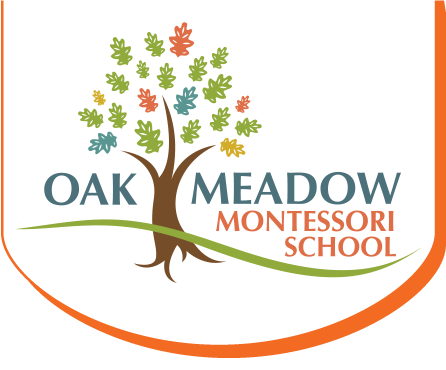Lower Elementary students are sitting in a circle on the carpet during one of their daily morning meetings. A student brought an item from home as part of his “sharing” time, in this case an original drawing he has created. After presenting the drawing to the class, the teacher asks if other students have questions or comments. “Did you put in all of those details?” one student asks. “Yeah, I did,” he responds. “That is really cool,” pipes in another student. “I agree, it looks really good.” “How did you make it?” “How long did it take?” “Did you make it up or is it from a book or movie?”

Morning meeting in one of the Lower Elementary classrooms
Morning circles like this happen every day in classrooms across the school. Here in Lower Elementary, morning meetings have many useful purposes. They build community, help students get to know each other better, and serve as a check-in to see how everyone is doing. The morning meeting is also used to help students build important skills, such as sharing, listening, having a conversation, asking questions, responding to comments by other students, and practicing public speaking.
Morning meeting is an important time, in particular, to help students build social-emotional learning skills. In one of the classes I visited this week, the students had already taken the first steps in creating a class “charter.” The idea of the charter is to engage students themselves in defining appropriate expectations and ways of cooperating with each other. In this way, the charter is developed and owned by the students, so that it feels internal to the students, and not imposed externally by the teacher. After considerable discussion, the students agreed on six words that would guide their interactions in and out of the classroom. They are: happy, confident, peaceful, safe, focused, respected.
There are still two more steps to go in creating a charter all of the students will sign. The first is to answer the question, “how will we help each other feel this way?” And the final question is, “what will we do if we do not feel this way?” If social or emotional missteps occur, how will students correct this? How will they make amends if a student feels excluded, disrespected, or hurt?
 During the morning meeting I attended, the teacher helped the students think more about the second question,”how we will help each other feel this way?” by reading aloud to the class from the book, Our peaceful classroom: illustrations by children from Montessori schools around the world, with a narrative by Aline Wolf. Here is a brief sample of the text:
During the morning meeting I attended, the teacher helped the students think more about the second question,”how we will help each other feel this way?” by reading aloud to the class from the book, Our peaceful classroom: illustrations by children from Montessori schools around the world, with a narrative by Aline Wolf. Here is a brief sample of the text:
“Our classroom is a very happy place.
It is bright and cheerful.
We keep everything neatly on our shelves.
Every day we choose the material we want to work with.
If we don’t know how to use it, our teacher helps us.
When we finish our work, we put the material back in its place.
Sometimes two of us want to use the same material at the same time.
We might start to fight over it.
Then our teacher tells us that hands are for helping, not for hurting.
Our teacher asks us to think of a better way to decide who can use it.
We decide to take turns because that is the most peaceful way.
We try to speak nicely to each other and to be kind.
We are also learning to help other people and to make friends with anyone who is all alone.
Sometimes we play the silence game.
When we play this game, everyone holds very still and stops talking.
Then we can listen to our thoughts.
It is very quiet and peaceful.”
I attended a recent meeting of the Lower Elementary teaching team, and they shared additional insights. “When children arrive in Lower Elementary, they have entered a new developmental phase. They are growing rapidly in so many ways, cognitively, physically, and emotionally. If we don’t continue the focus on SEL skills in this new developmental phase, they could lose the skills they acquired in early childhood.”
 Another teacher added, “In these ages, the social side of their experience is getting bigger. Teachers have to assess the skills of each student, and determine which skills need to be improved. In Lower Elementary, we make time for these lessons. Sometimes this happens as intentional teaching, such as in the morning meeting. Other times, these lessons are needed in response to something happening at the moment–in the classroom or on the playground. The teacher is always thinking very carefully about when and how to integrate SEL, with the goal of being as effective as possible in helping students to develop the necessary skills.”
Another teacher added, “In these ages, the social side of their experience is getting bigger. Teachers have to assess the skills of each student, and determine which skills need to be improved. In Lower Elementary, we make time for these lessons. Sometimes this happens as intentional teaching, such as in the morning meeting. Other times, these lessons are needed in response to something happening at the moment–in the classroom or on the playground. The teacher is always thinking very carefully about when and how to integrate SEL, with the goal of being as effective as possible in helping students to develop the necessary skills.”
One of the SEL tools being used by teachers in Lower Elementary is called “whole body listening.” According to speech and language pathologist Elizabeth Sautter, listening is actually a very complex skill, and if we are going to help students learn how to listen better, we need to help them break down this skill in easier, more concrete ways to understand. She writes, “Listening with your whole body involves integrating all of the body senses (sensory processing), and combining that with executive functioning (self-control of brain and body), and perspective taking (thinking of others and what they are saying). This is not an easy task, and it is extremely important to be aware of the processing complexity involved.”
“Whole body listening” is a way to make this very complex process more understandable for children. “This innovative tool breaks down the abstract concept of listening by explaining how each body part other than the ears is involved: the brain thinking about what is said; the eyes looking at or toward the speaker; the mouth quiet; the body facing toward the speaker; the hands and feet kept quiet and to oneself.”
“There are cards,” one of our teachers explains, “with different pictures of the body. We put out all of the choices, and ask each student to tell us what is easiest for them, and what is hardest? Then we know what may take more practice. Sometimes if a child is having a hard time working on a particular skill, they put the card in front of them while they are working on a lesson. That helps to remind them about practicing that skill.”
Whole body listening is a tool, it is not a rule or a form of discipline. Each child is different, and the goal is always to help each student to advance in the skills they most need to be effective listeners. “To explain listening in a way that makes sense,” says Elizabeth Sautter, “a host of social cognitive and sensory processing skills may first need to be concretely taught. And in some cases, children with social learning, sensory processing, attention, or other regulation challenges may not be able to perform tasks generally associated with listening, such as keeping one’s body still, making eye contact, or staying quiet.” In response to this, our teachers assess each child individually for their needs and supports, and sometimes this involves modifications and differentiated practices designed to help these students develop their competencies with these skills.
These social-emotional skills are essential to being productive and happy in school and life. We know this is true, because we have been learning this throughout our lives as adults–and sometimes we have to admit with humility that we need to keep working at this. How many of us claim to be a master listener? That should give us some perspective, as we think about the important work happening in this classroom with students in grades 1-3. When I think about young students working to develop real, concrete competencies in emotional intelligence, it makes me hopeful, both about our school and about the future of humanity.
Quotes above from “Tips to Teach Whole Body Listening: It’s a Tool Not a Rule,” adapted from an article by Elizabeth Sautter, MA, CCC-SLP





